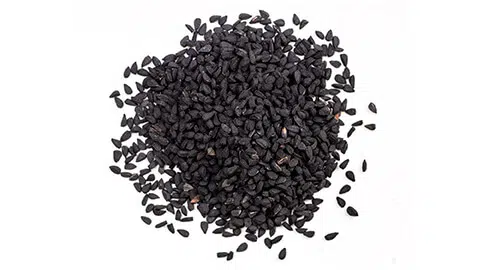Nigella seeds
The spice nigella seed is also called black cumin seed, although the spice has nothing to do with cumin seed at all.
Nigella seed grows on an annual plant that can reach a height of about 60 cm. The plant grows light blue or white flowers. The seeds grow in the follicles of fruits and are narrow, pear-shaped and white. They turn black as soon as they come into contact with oxygen.



